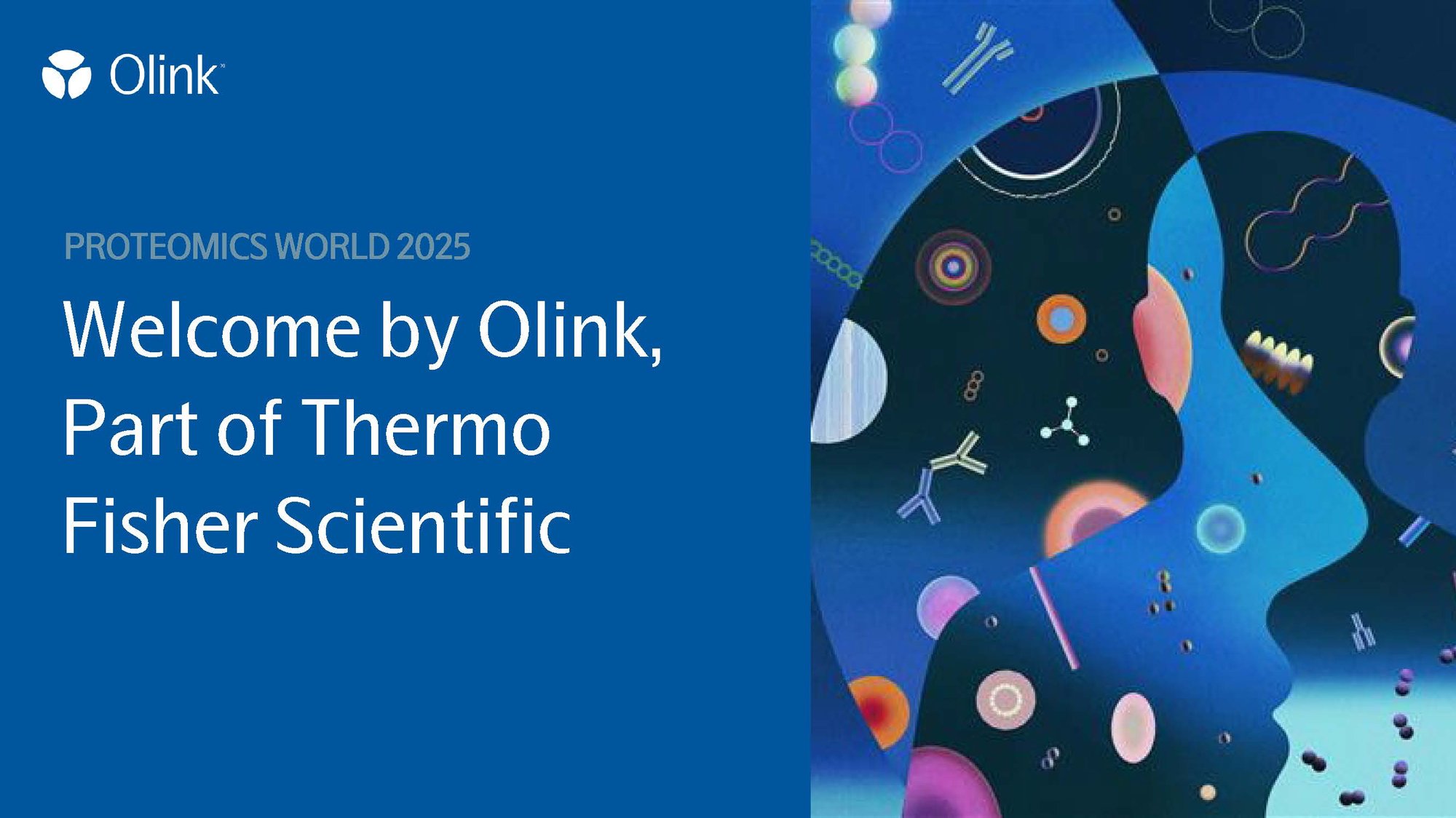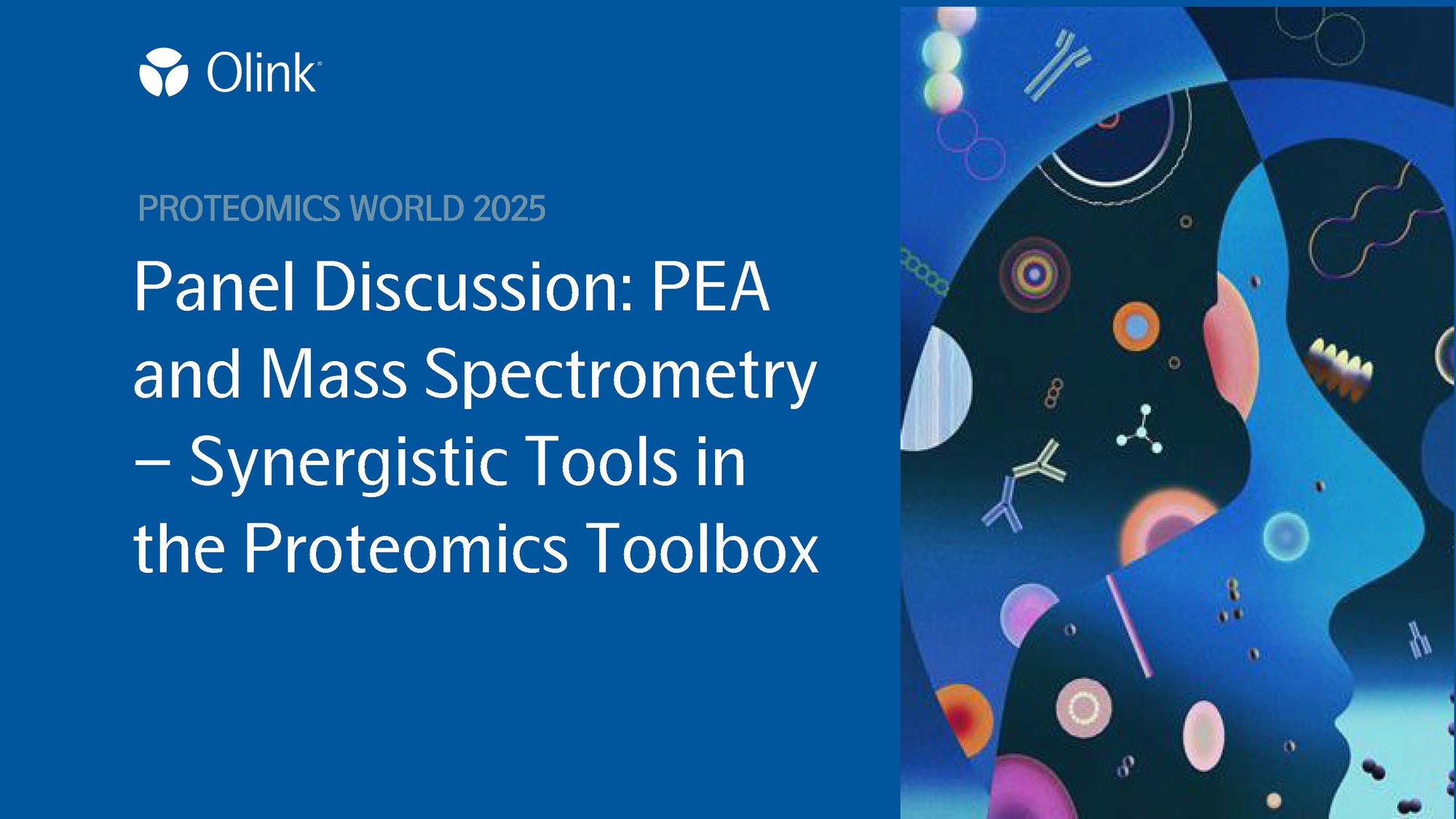Olink Proteomics World 2025
Be part of the global proteomics movement – watch Olink Proteomics World
Olink Proteomics World 2025
Be Part of the Global Proteomics Movement – Watch Olink Proteomics World
The sessions are organised in three tracks, each featuring cutting edge science with insightful discussions and practical suggestions:
Multiomics & Precision Health – Discover how proteomics complements GWAS, fuels new hypotheses using UK Biobank data, and drives workflow standardization.
Population Proteomics – Join expert panels on increasing diversity in cohort studies and see how combining MS and affinity-based platforms expands proteome coverage.
Disease-Focused Applications – Dive deep into neurology, oncology, and infectious diseases. Get practical tips on proteomics and translational impact.
Want access?
Register to watch 30+ global experts across 17 talks on multiomics, population proteomics, and disease-focused applications - including masterclasses, tutorials, and expert panels.
Register for access
The sessions are organised in three tracks, each featuring cutting edge science with insightful discussions and practical suggestions:
Multiomics & precision health – Discover how proteomics complements GWAS, fuels new hypotheses using UK Biobank data, and drives workflow standardization.
Population proteomics – Join expert panels on increasing diversity in cohort studies and see how combining MS and affinity-based platforms expands proteome coverage.
Disease-focused applications – Dive deep into neurology, oncology, and infectious diseases. Get practical tips on proteomics and translational impact.
Welcome by Olink, part of Thermo Fisher Scientific
Yan Zhang
President, Olink, part of Thermo Fisher Scientific
Key Takeaways
-
Olink Proteomics: Discover how Olink proteomics solutions help bridge the gap between genotype and phenotype, as well as drive understanding of causal mutations.
-
From discovery to clinical translation: Learn how to harness deep discovery power to identify clinically relevant targets, verify findings, and accelerate clinical trials or LTD pipeline development.
-
Explore HT Grant winners: Find out who won the Explore HT 2025 grant and how their work is advancing proteomics research.
-
Olink Proteomics World opening: A look ahead at the event’s kickoff and highlights for attendees.
Keynote: Integrating Olink proteomics and human organoids to model sepsis-induced organ failure
Harley Robinson, PhD
Research Officer, Cardiac Drug Discovery Lab, QIMR Berghofer, Herston, QLD, Australia
Key Takeaways
-
Biomarker discovery: Learn how advanced proteomic profiling helps identify thousands of proteins altered in sepsis, offering new insights into disease-specific biological pathways. Discover the role of Explore HT content in identifying new biomarkers for many diverse diseases and organoids.
-
Novel discoveries: Understand how comparing Explore HT assays with earlier panels reveals novel protein markers linked to organ dysfunction and inflammation in sepsis.
-
Verification processes: Gain perspective on validating large-scale protein findings against clinical data and literature to strengthen biological interpretation and research relevance.
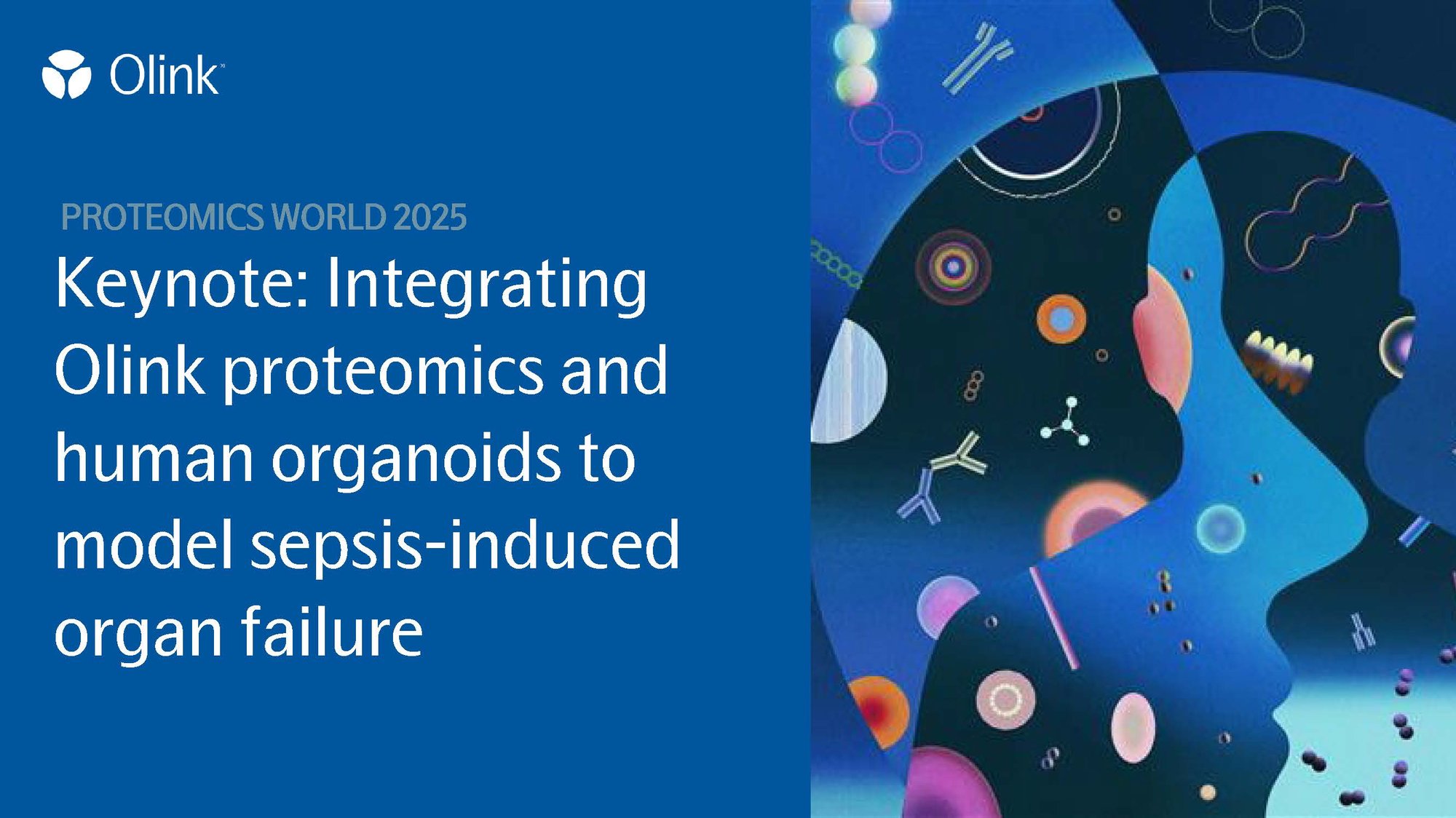
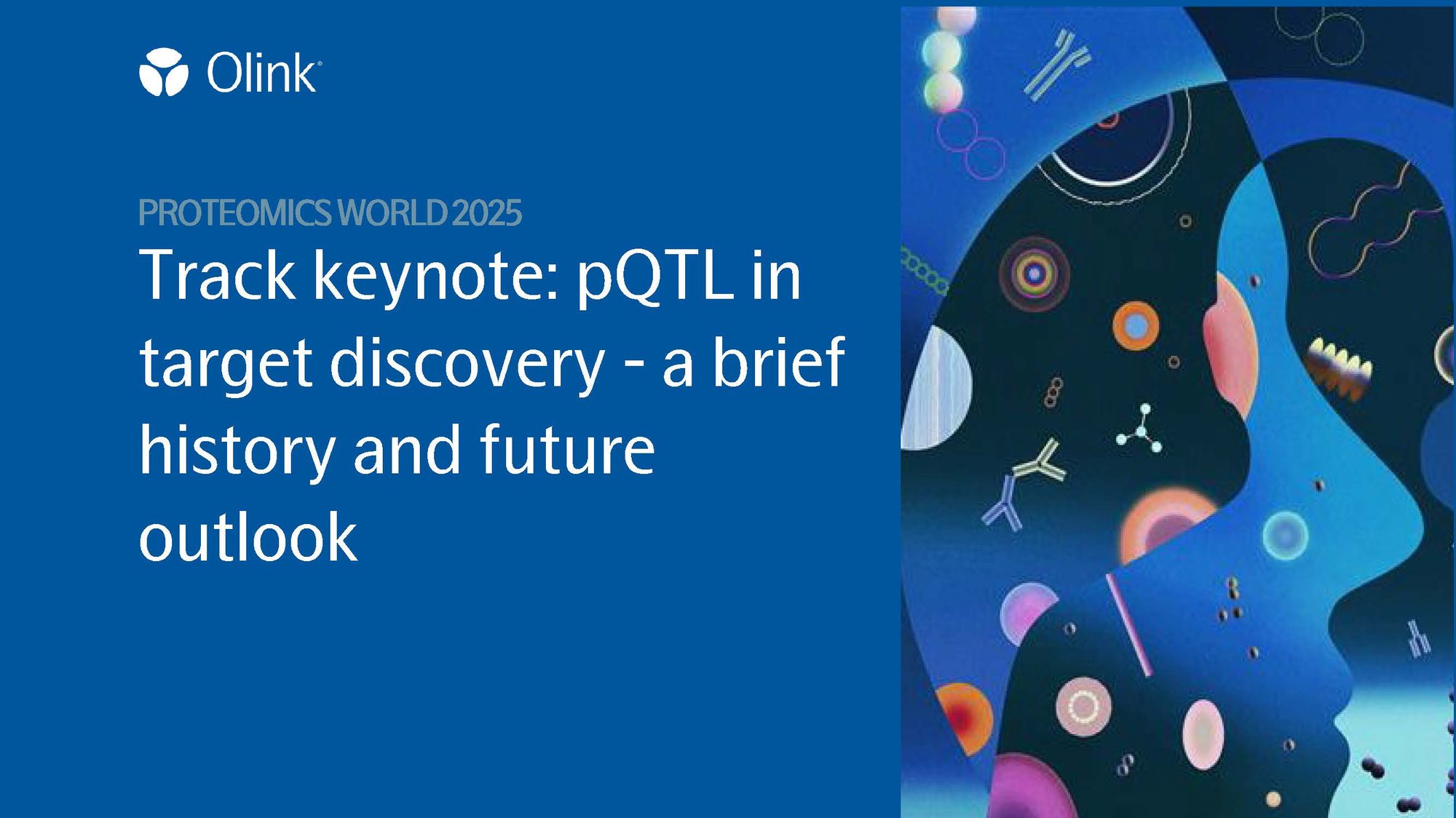
Track keynote: pQTL in target discovery - a brief history and future outlook
Anders Mälarstig
Affiliate Researcher at Karolinska University
Key Takeaways
-
Proteomics at scale: Advances in high-throughput proteomics now allow thousands of proteins to be measured across large cohorts. This has enabled the discovery of protein quantitative trait loci (pQTLs) — genetic variants that regulate protein abundance and link genetics to biology.
-
SCALLOP’s role in target discovery: The SCALLOP consortium brought together data from tens of thousands of people, creating one of the first large-scale maps of how genes influence circulating proteins (pQTL map), enabling the identification of proteins with a likely causal role in disease.
-
What’s next: The field is now moving toward tissue-specific pQTL mapping, longitudinal proteomics, and deeper characterization of proteoforms and post-translational modifications—creating opportunities for richer biological insight and more precise therapeutic targeting.

From variants to function with proteomics: Measure once, query often. Masterclass: How to complement GWAS with proteomics
Cindy Lawley, PhD
Sr Director, Population Health, Olink, part of Thermo Fisher Scientific
Key Takeaways
-
Integrating Genomics and Proteomics: Learn how large-scale collaborations like the UK Biobank PPP combine genomic and proteomic data to uncover disease causality and drive precision drug discovery.
-
Enhancing Genetic Insights: Gain understanding of how proteomic data refines genetic associations, validates therapeutic targets, and improves the efficiency and success of drug development.
-
Advancing Clinical Translation: Discover how Olink’s scalable, high-specificity proteomic platforms enable longitudinal population studies that accelerate biomarker discovery and clinical research breakthroughs.
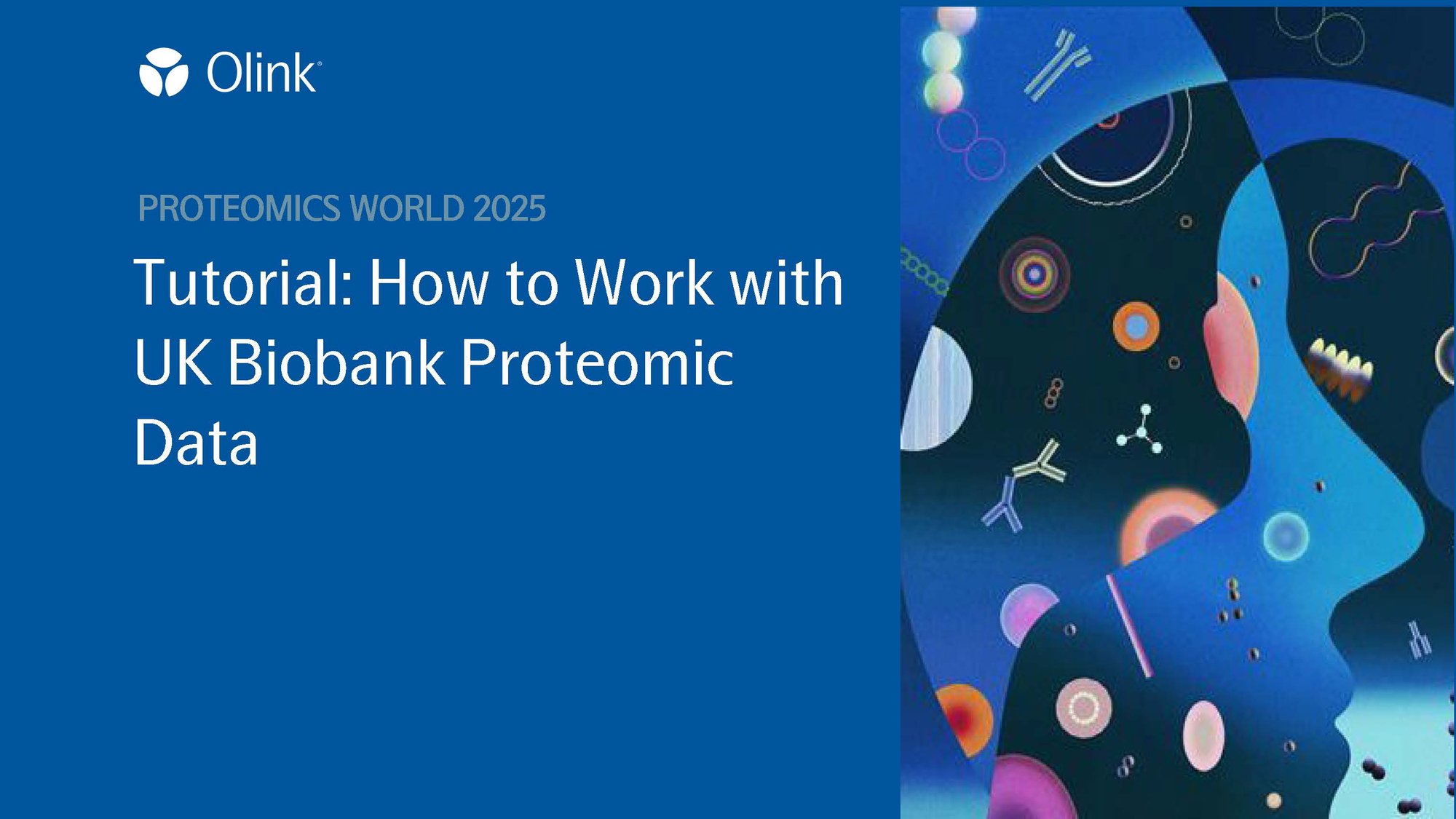
Tutorial: How to work with UK Biobank proteomic data
Klev Diamanti, PhD
Staff Data Scientist, Olink, part of Thermo Fisher Scientific
Cindy Lawley, PhD
Sr. Director, Population Health, Olink, part of Thermo Fisher Scientific
Key Takeaways
-
Leveraging the world’s largest human proteomics dataset: The UK Biobank Pharma Proteomics Project measured over 50 million protein data points using Olink® Explore 3072 — now accessible through Olink Insight for hypothesis generation, validation, and study design.
-
From exploration to deep analysis: Researchers can start by exploring protein–disease associations and normal ranges in Olink Insight, dive into curated “data stories” (pre-analyzed case studies), or perform full-scale analysis in the UKB Research Analysis Platform (RAP) powered by DNAnexus.
-
Accelerate research and funding: Use UK Biobank proteomics to validate biomarkers, discover new disease-linked proteins, and strengthen grant proposals with robust population-level evidence.
-
Flexible for all expertise levels: Whether you’re new to bioinformatics or managing large analytical pipelines, Olink and UK Biobank together provide a scalable, secure framework for data-driven discovery.
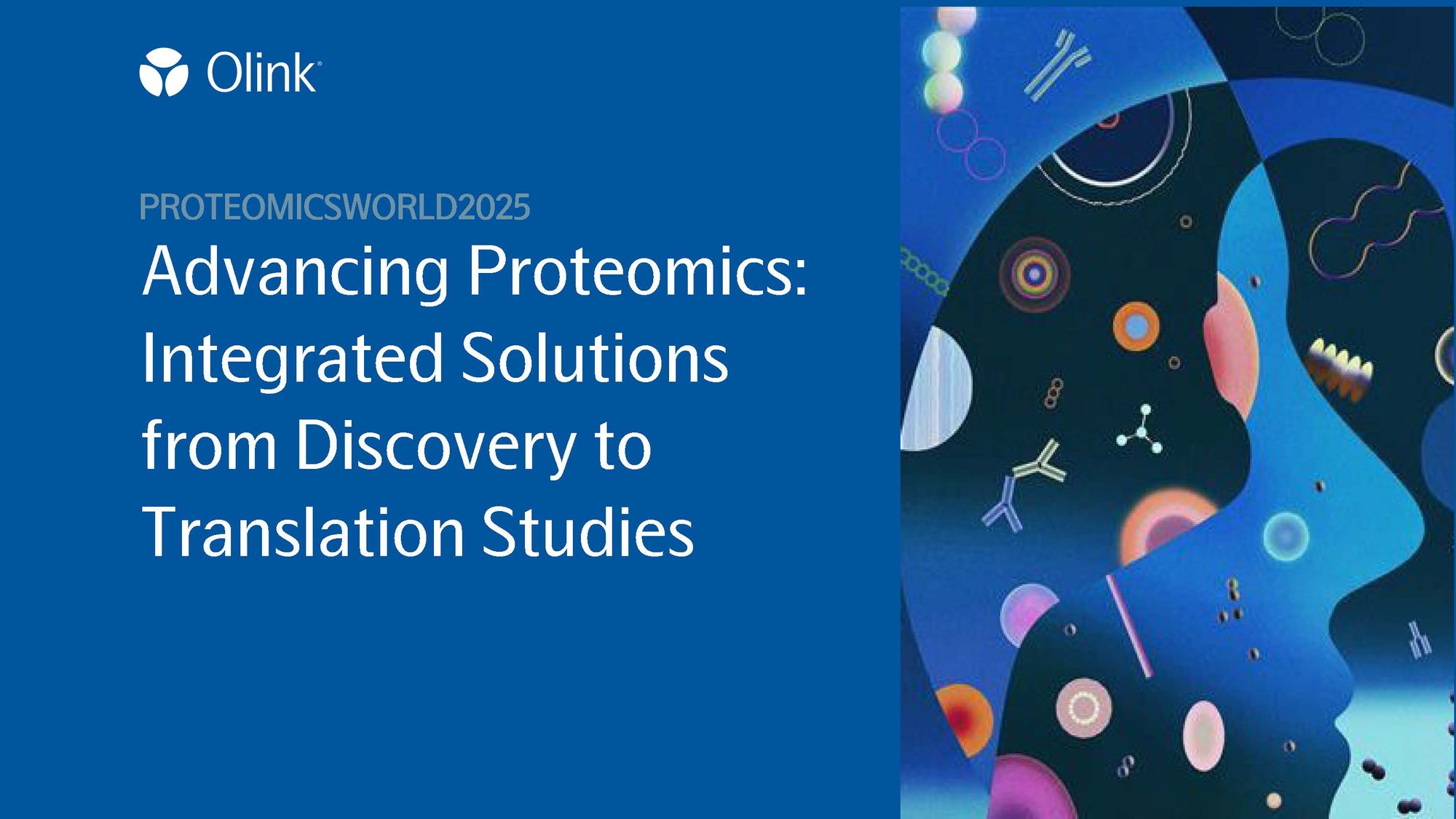
Advancing proteomics: Integrated solutions from discovery to translation
Markus Miholits
Senior R&D Manager, Protein and Cell Analysis, Thermo Fisher Scientific
Stefan Jellbauer, PhD
Sr. Manager, Product Management Immunoassays, Thermo Fisher Scientific
Key Takeaways
-
End-to-End Workflow Design: Learn to plan protein studies from discovery to verification, selecting the appropriate platform — Olink Explore, Luminex ProcartaPlex, ProQuantum, or ELISA — for each stage.
-
Cross-Platform Consistency: Understand how to benchmark and validate biomarkers across platforms using shared antibodies, orthogonal assays, and correlation analyses to generate reviewer-ready evidence.
-
Translational Study Strategy: Explore how temporal biomarker behavior and well-characterized cohorts inform panel selection, custom assay development, and clinical research readiness in neurology.

Panel discussion: Beyond the bench – CROs at the heart of Mmultiomics & precision medicine
Lele Sun, PhD
CEO, Sequanta Technologies
Haythem Latif, PhD
Sr Director / Global GM NGS & Clinical Services, Azenta
Danielle Gutierrez, PhD
Senior Director, Proteomics, Discovery Life Sciences
Alex Perieteanu
VP and Global Head of Science, Innovation and Development, CellCarta
Key Takeaways
-
CROs are innovation engines, not just executors: Certified service providers (CSPs) are co-developing methods, benchmarking platforms, and integrating Olink with MS/NGS to push precision health forward.
-
Multi-omics under one roof speeds decisions: Centralizing proteomics, genomics, pathology, flow, and bioinformatics reduces handoffs, harmonizes QC, and shortens cycle times from discovery to translation.
-
Quality is the currency: Regulatory-grade QMS (e.g., CLIA/CAP, validated pipelines), proficiency testing, and platform certifications (e.g., Olink CSP) underpin reproducibility and data trust.
-
From exploratory to regulated: Biomarkers discovered with high-plex proteomics are increasingly being monitored in Ph1/2; success hinges on early validation plans and assay transfer strategies.

Track keynote: Decoding the human plasma proteome in the age of precision medicine
Prof. Mathias Uhlén, PhD
Professor, Science for Life Laboratory and Albanova University Center, Royal Institute of Technology (KTH), SE-106 91 Stockholm, Sweden
Key Takeaways
-
Comprehensive profiling at scale: Olink Explore HT enables detailed blood protein profiling and is expanding to 10,000 patients in the Human Disease Blood Atlas, strengthening disease coverage and dataset robustness.
-
Clinical breadth and utility: The Olink Explore HT assay captures a wide range of diseases, demonstrating its value across diverse biological and medical contexts.
-
Empowering large-scale initiatives: Technological advances such as Olink PEA have been instrumental in projects like the Human Protein Atlas, enabling systematic mapping of the proteome.
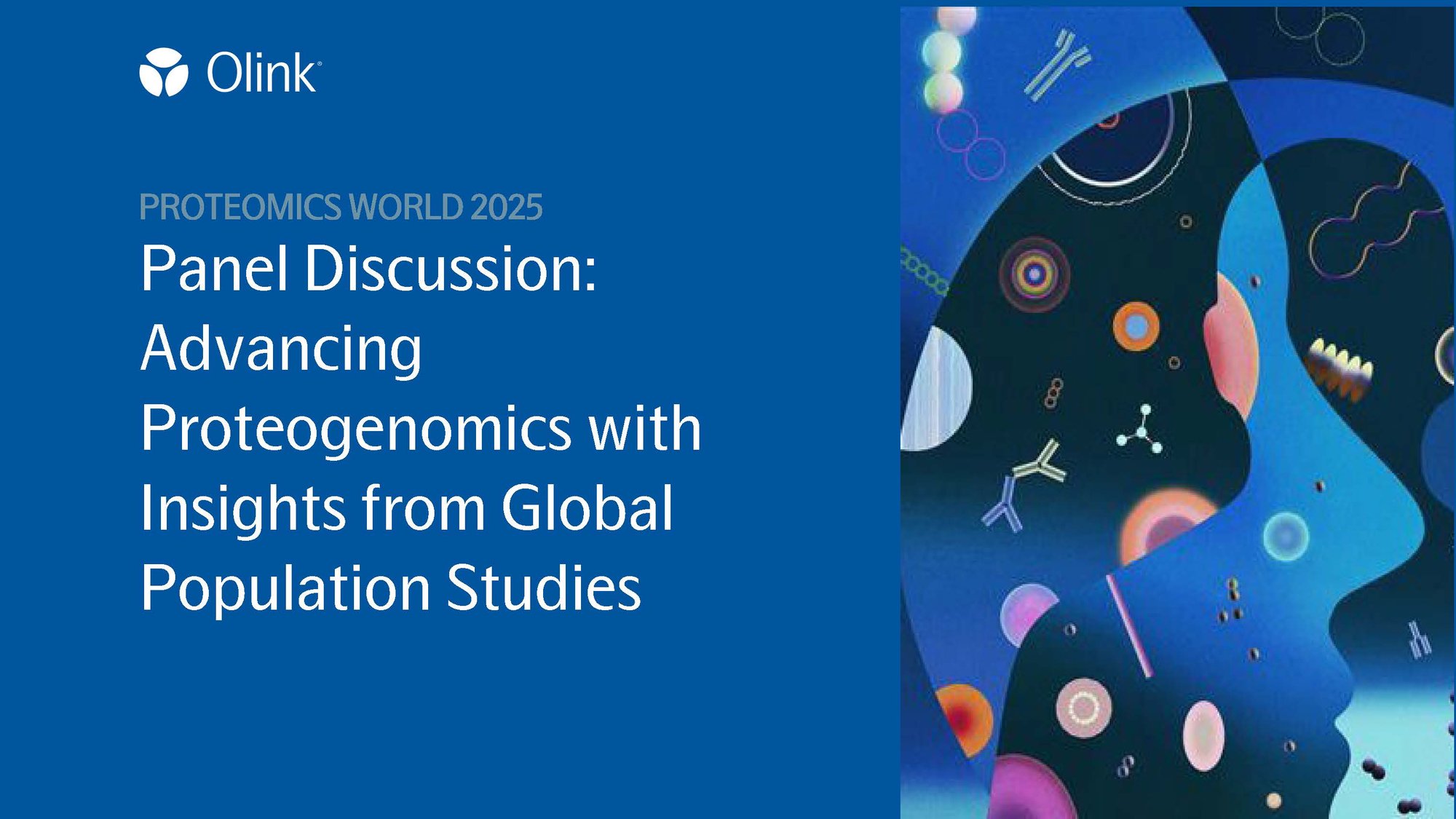
Panel discussion: Advancing proteogenomics with insights from global population studies
Mark McCarthy, MB, BChir, MD, FRCP
Senior Director, Staff Scientist, Genentech
Ayo Doumatey
Staff Scientist, Center for Research on Genomics and Global Health (CRGGH), part of the National Human Genome Research Institute (NHGRI), National Institutes of Health (NIH)
Dr. Oyesola Ojewunmi
Senior Research Fellow in Genomics, Queen Mary University of London
Key Takeaways
-
Global Disease Insight: Learn how high-throughput plasma proteomics across global populations uncovers shared and population-specific disease biology for equitable research.
-
Expanding Biomarker Discovery: Understand how integrating genomic, proteomic, and phenotypic data accelerates identification of causal proteins and informs precision medicine strategies.
-
Translational Impact: See how large-scale, multi-ancestry proteomic datasets strengthen drug target validation and improve the global reach of biomedical innovation.
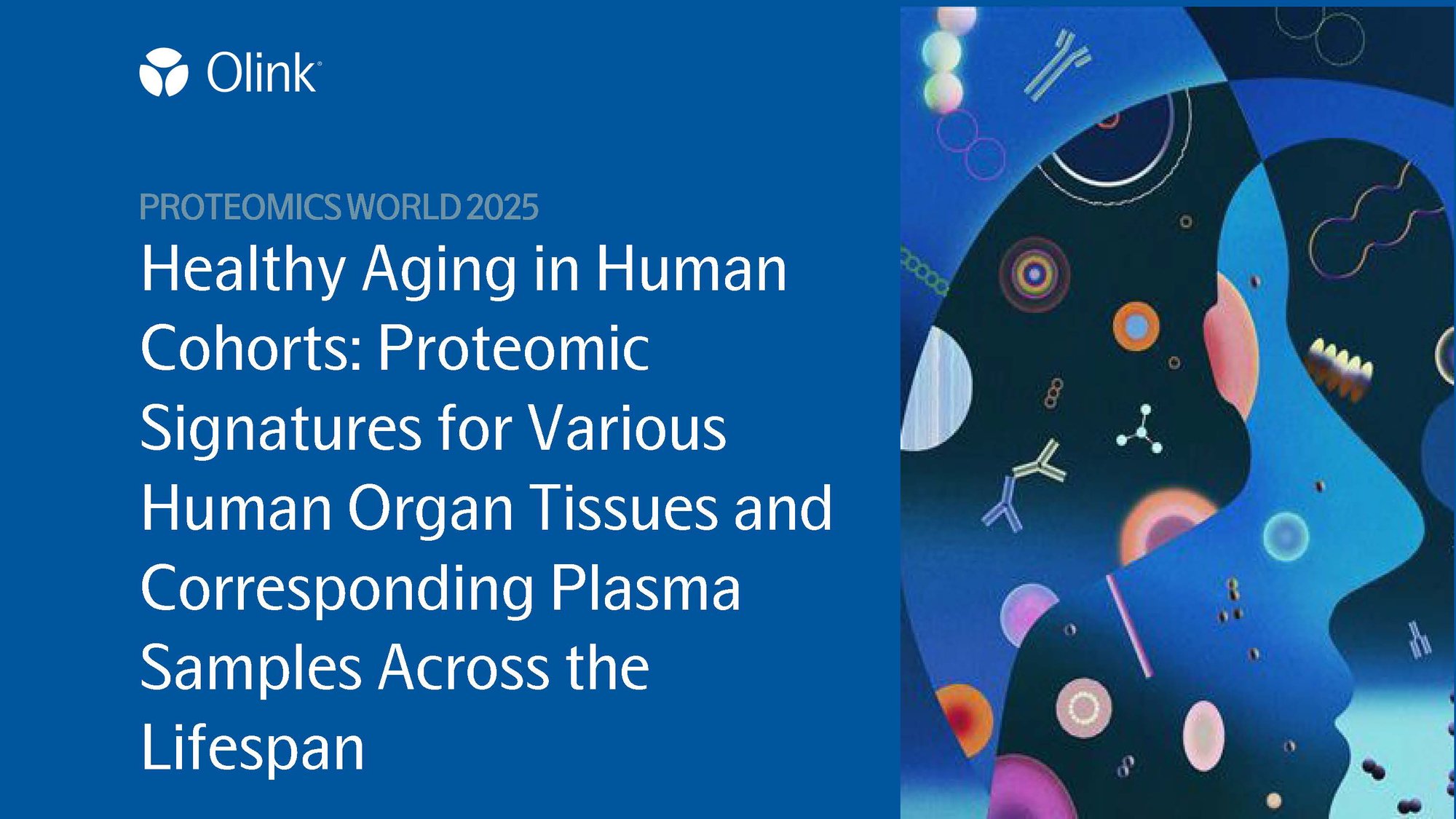
Healthy aging in human cohorts: Proteomic signatures for various human organ tissues and corresponding plasma samples across the lifespan
Birgit Schilling, PhD
Professor, Buck Institute for Research on Aging; Director of the Mass Spectrometry Core, Buck Institute; Adjunct Professor, University of Southern California (USC)
Key Takeaways
-
Large-scale profiling of plasma and tissues in aging: Using Olink Explore HT (>5,400 proteins), the team profiled plasma, muscle, and ovary samples from a healthy-aging cohort to discover tissue-derived aging markers detectable in circulation.
-
Tissue signals are mirrored in plasma: By analyzing matched muscle–plasma and ovary–plasma samples, the team identified proteins whose levels change in parallel across compartments, showing that plasma can capture tissue-derived aging signals.
-
Samples cluster by tissue type: Distinct age- and sex-specific protein markers emerged, providing insights into how different organs contribute to systemic aging profiles.
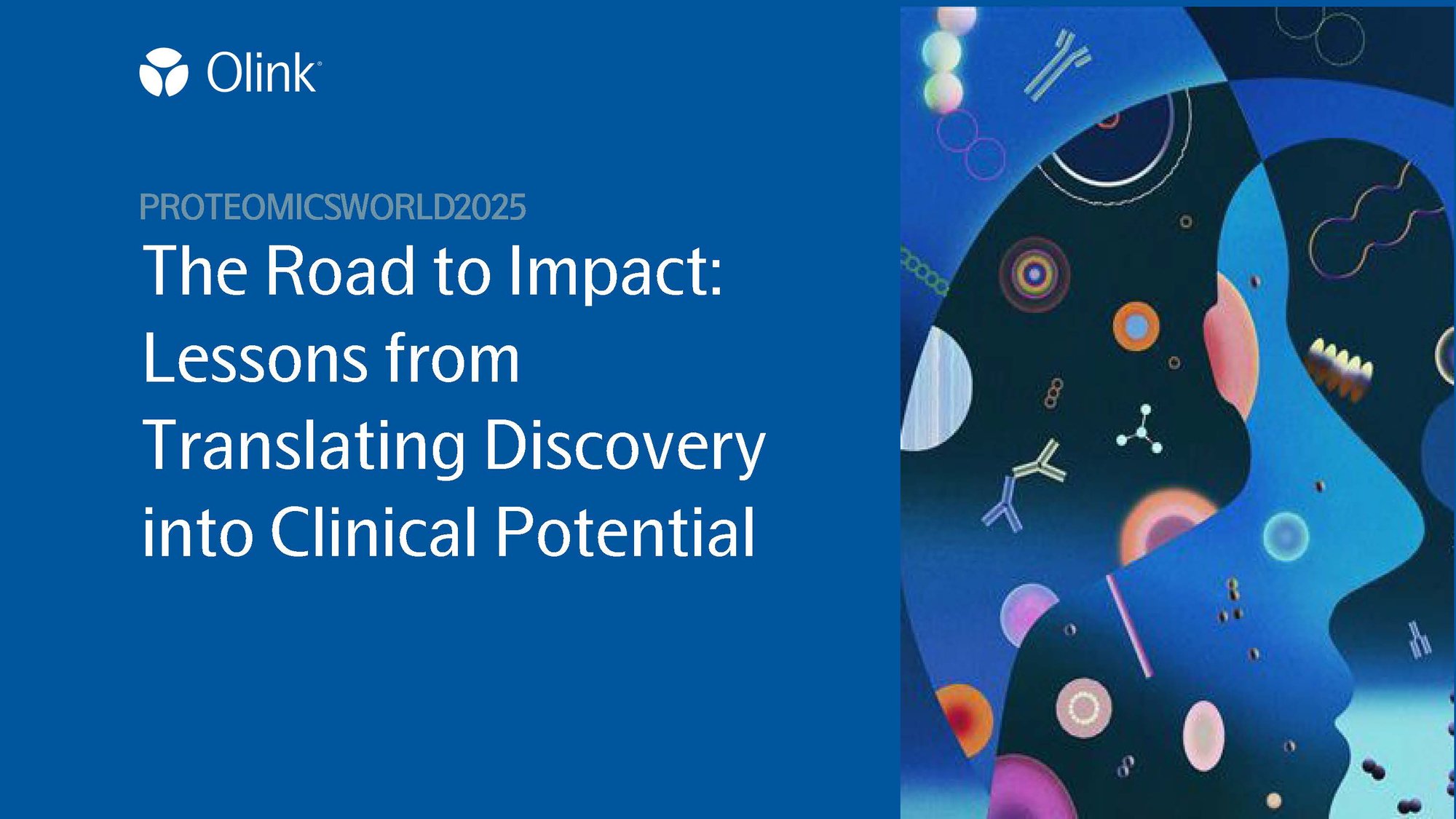
The road to impact: Lessons from translating discovery into clinical potential
Michael Förster, PhD
Senior Medical Science Liaison, Olink, part of Thermo Fisher Scientific
Key Takeaways
-
From discovery to translational impact: The Olink platform uniquely spans from broad discovery (Explore HT, >5,400 proteins) to focused, validated panels (Target, Flex, Focus), enabling translation from biomarker discovery to lab-developed tests.
-
Discovery with scalability delivers impact: Olink Explore 384 revealed a 12-protein signature of progressive fibrosing interstitial lung disease that could streamline clinical trials, while Target 96 panels uncovered a 36-protein signature predicting lung cancer up to 3 years before diagnosis.
-
Olink Focus for protein signature verification: Olink Focus allows researchers to build fully customized panels (up to 21 proteins) with absolute or relative quantification and tailored validation — providing a flexible path to confirm candidate biomarkers.
Panel discussion: PEA and mass spectrometry – synergistic tools in the proteomics toolbox
Joshua Coon
Thomas and Margaret Pyle Chair at the Morgridge Institute for Research; Professor of Biomolecular Chemistry and Chemistry, University of Wisconsin–Madison
Stefanie Hauck, PhD
Head of Metabolomics & Proteomics Core, Helmholtz Zentrum München
Yue Xuan, PhD
Senior Marketing Manager, Precision Medicine, Thermo Fisher Scientific
Jenny Samskog, PhD
Vice President, Product Management, Olink, part of Thermo Fisher Scientific
Key Takeaways
-
Complementarity of technologies: PEA and mass spectrometry are synergistic tools, each with distinct strengths in proteomic depth, throughput, and analytical capabilities.
-
Data overlap and discrepancies: Viewing both technologies from complementary perspectives provides deeper biological insights and cross-validation opportunities.
-
Data integration challenges: Combining datasets from MS and PEA remains technically demanding and highlights the need for improved computational tools and standards.
-
Application-driven choice: The technology selection depends on research goals — broad discovery, targeted validation, or clinical translation. PEA is well suited for large-scale cohort studies, while MS provides higher molecular detail, making them complementary across research stages.
-
Future outlook: The panel emphasized the potential for hybrid workflows where PEA and MS work together in biomarker discovery, verification, and translational research pipelines.

Track keynote: Broad-capture proteomics to improve rare disease diagnosis and characterization
Julia Carrasco Zanini Sanchez, PhD
Queen Mary University of London
Key Takeaways
-
Plasma proteomics for diagnosis: Learn how circulating-protein outliers, measured with the Olink Explore platform, complement genomics to interpret uncertain variants and prioritize diagnoses across rare diseases.
-
Convergent prioritization framework: Understand how integrating Olink proximity-extension data with phenotype-informed variant ranking can surface candidate genes and boost diagnostic yield.
-
Practical study insights: Discover when proteomics excels — guiding reanalysis for missed variants, revealing novel genes, and identifying differences and limitations in diagnostic yield.
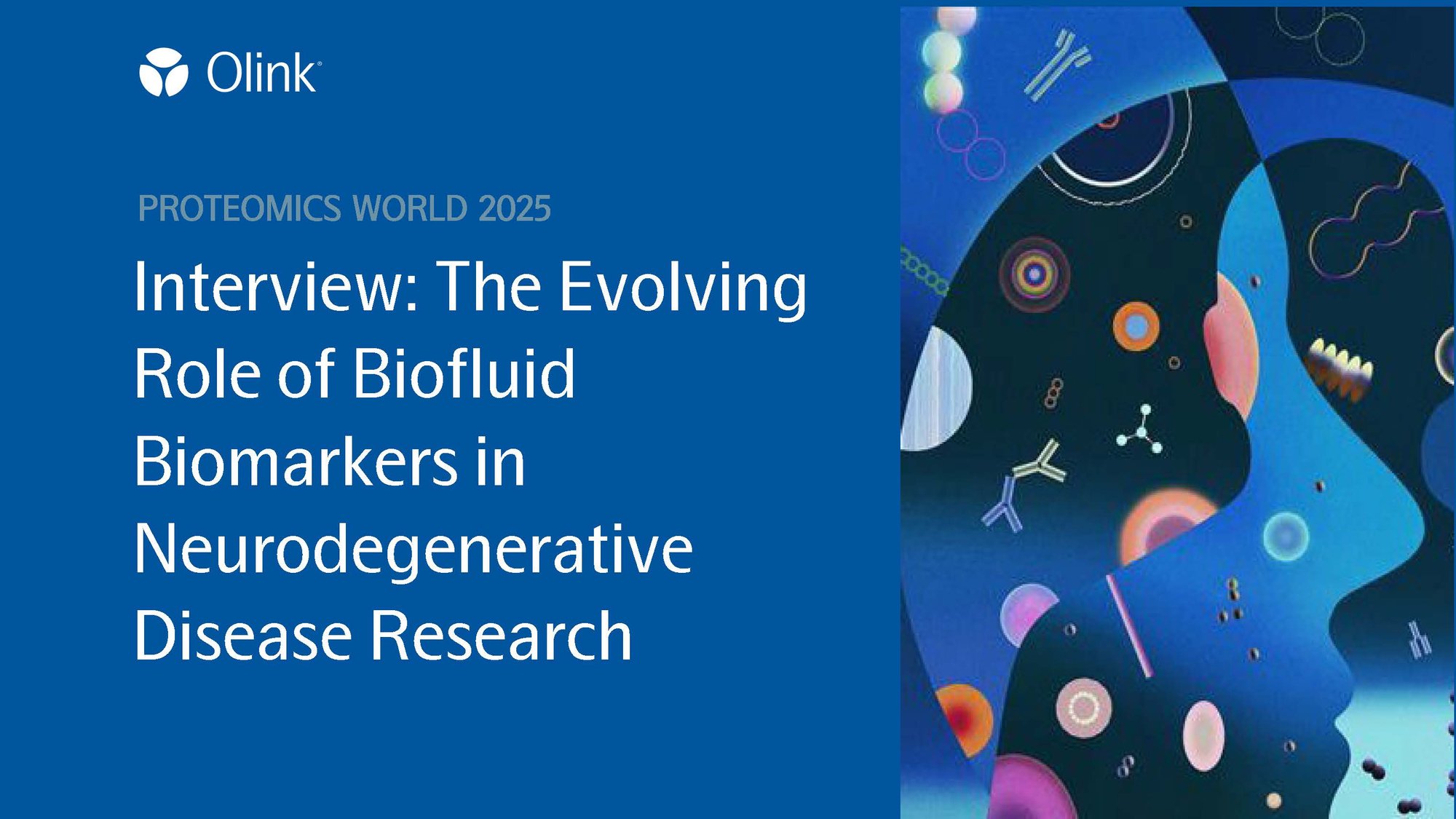
Interview: The evolving role of biofluid biomarkers in neurodegenerative disease research
David Wolk, MD
Penn Memory Center at the Penn Neuroscience Center
Key Takeaways
-
Multimodal approach to Alzheimer’s heterogeneity: Learn how biofluid assays, alongside PET and MRI, provide a multidimensional approach for disentangling Alzheimer’s disease heterogeneity — from onset and symptoms to progression — and how co-pathologies shape this complexity.
-
Accelerating biomarker implementation: Explore how using both established tests (such as tau and amyloid PET) and emerging tools can speed up the transition from biomarker discovery to clinical application.
-
Promise of plasma-based biomarkers: Understand how combining plasma biomarkers with imaging modalities can transform patient care — enabling early detection, precise molecular diagnosis, and improved patient stratification for targeted therapies.
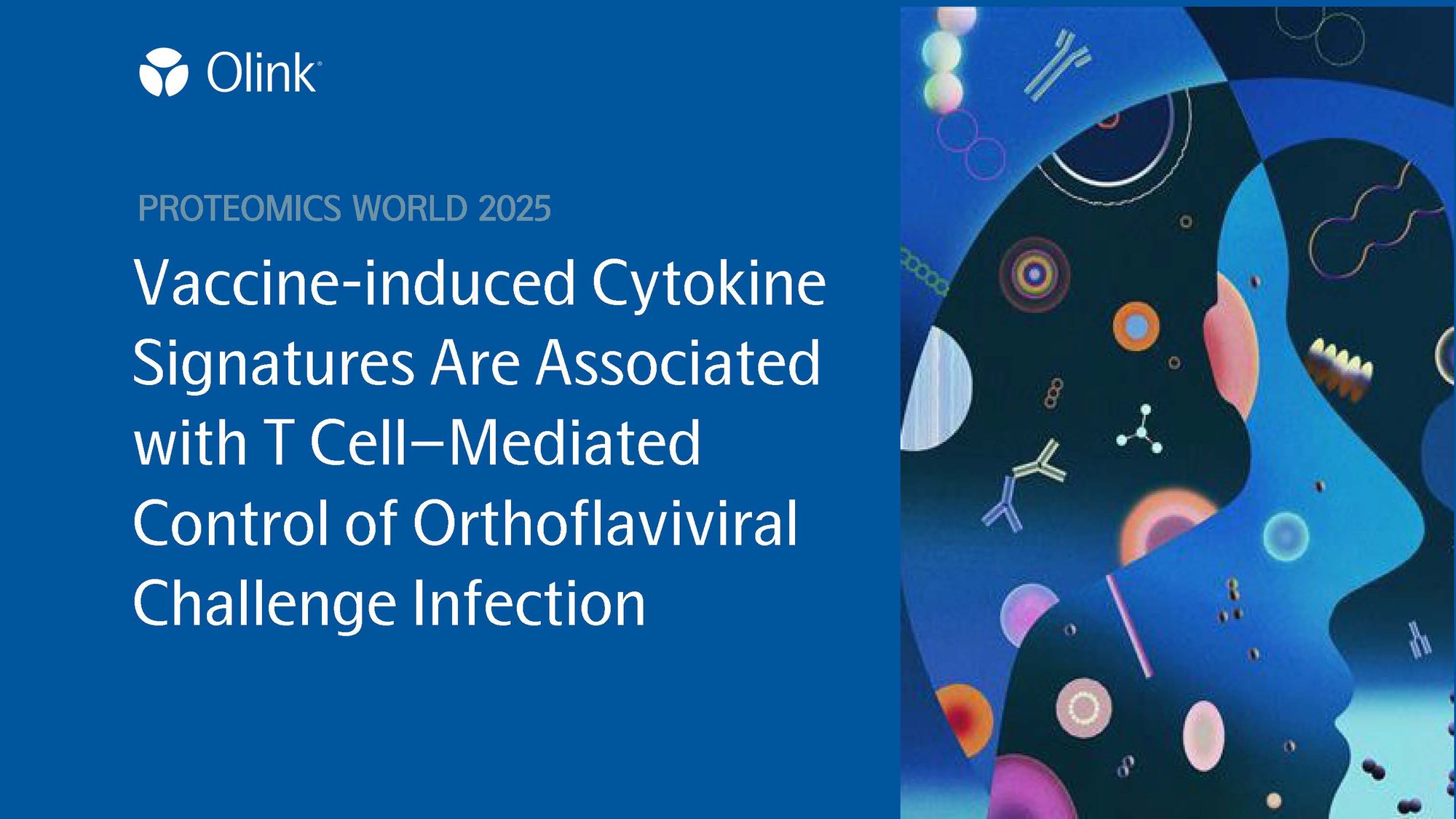
Vaccine-induced cytokine signatures are associated with T cell–mediated control of orthoflaviviral challenge infection
Eugenia Z. Ong, PhD
Senior Research Fellow, Duke-NUS Medical School Singapore
Key Takeaways
-
Beyond antibodies: Neutralizing antibodies block infection, but cellular immunity (CD4⁺ and CD8⁺ T cells) plays a central role in controlling viral replication.
-
A unique study design: By comparing two related vaccines that trigger the same T cell responses but different antibody responses, the team could tease apart the role of T cells in protecting against viral infection.
-
T cell responses matter: Higher capsid-specific T cell responses correlated with protection (aviremia) after challenge, even without cross-neutralizing antibodies.
-
Cytokine signatures predict outcomes: Early cytokine profiles, identified using Olink® Target 48 cytokine and immune surveillance panels, were associated with the quality of T cell responses and viral control — suggesting that cytokine and T cell readouts could complement neutralizing antibody titers as correlates of protection.

Combined JAK inhibition and PD-1 blockade improves response in lung cancer patients
Divij Mathew, PhD
Postdoctoral Research Fellow, University of Pennsylvania
Key Takeaways
-
Timing matters in IFN signaling: Interferon signaling is essential to kick-start immunity, but persistent exposure pushes CD8⁺ T cells toward terminal or exhausted states and undermines responses to checkpoint blockade.
-
Delay the brake, boost the response: In preclinical models and a small NSCLC study, delayed JAK1 inhibition layered onto anti-PD-1 improved tumor control compared to anti-PD-1 alone — supporting a “stimulate first, then modulate inflammation” strategy.
-
Progenitor CD8⁺ T cells are the engine: Clinical responses during the JAKi window were associated with expansion of progenitor-like CD8⁺ subsets (and reduced terminal cells), with TCR tracking showing shared clonotypes across downstream fates.
-
Baseline inflammation profiling to identify non-responders: Longitudinal plasma proteomics (Olink® Target 96 Inflammation) revealed a chronic inflammation signature at baseline in patients who failed to respond — pointing to a triage biomarker for combination therapy.
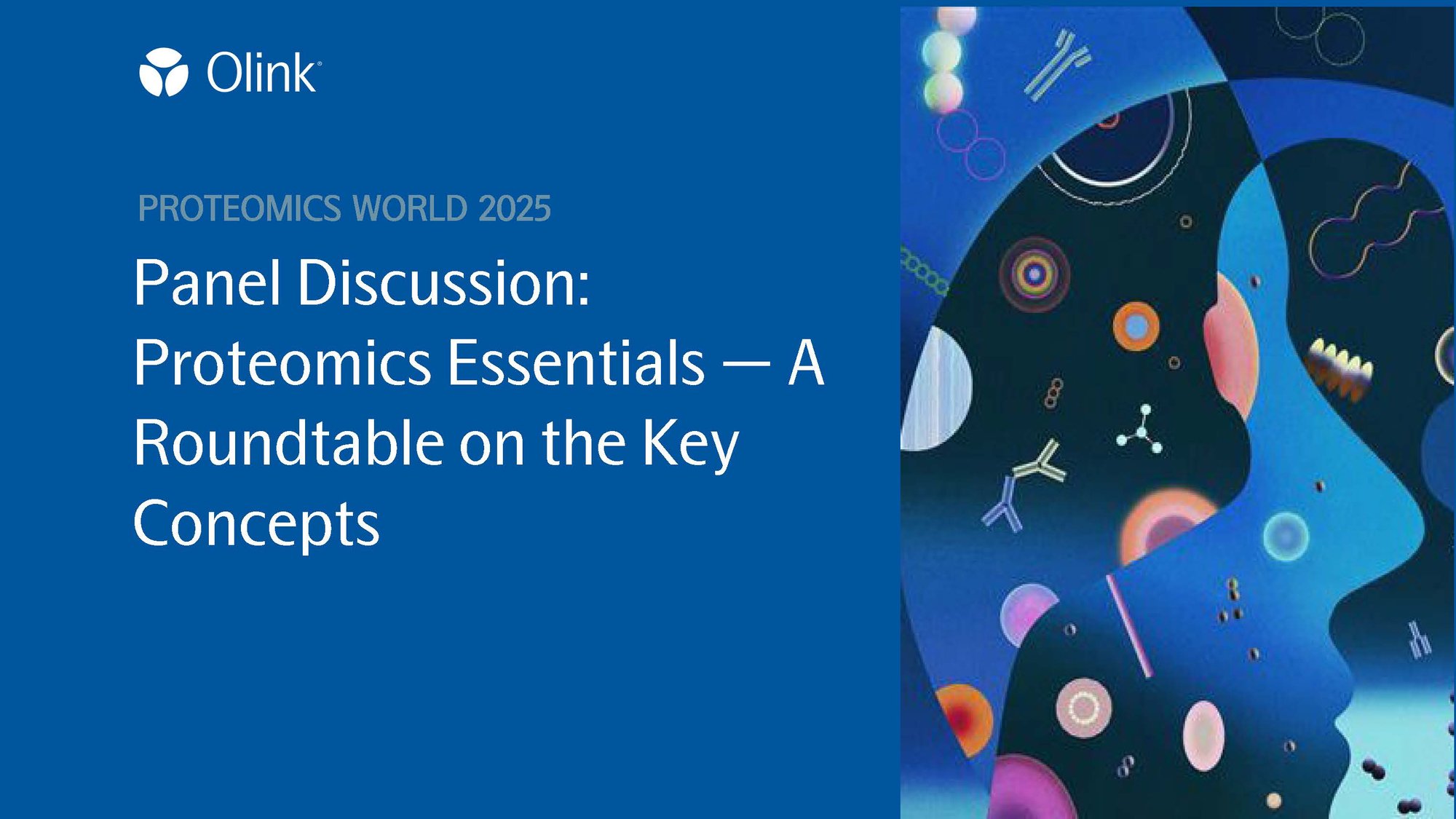
Panel discussion: Proteomics essentials — a roundtable on the key concepts
Joseph Caruso
Sr. Field Application Scientist, Olink, part of Thermo Fisher Scientific
Scott Fu
Sr. Field Application Scientist, Olink, part of Thermo Fisher Scientific
Shana Lamers, MS, MBA
Senior Field Application Scientist, Olink, part of Thermo Fisher Scientific
Danai Topouza
Data Scientist, Olink, part of Thermo Fisher Scientific
Raymond Zimmerman
FAS Manager, Olink, part of Thermo Fisher Scientific
Key Takeaways
-
Choose the right platform: Prioritize sensitivity (low-abundance proteins, µL input), specificity (dual binding + DNA barcoding), scalability (pilot → cohort), and sample requirements (matrix/volume).
-
Design your study for reliable results: Match plex to sample size for statistical power, randomize across plates and runs, standardize pre-analytics (matrix, tube, storage, freeze–thaw), and plan bridge samples for multi-run or multi-year datasets.
-
Use available data analysis resources: Leverage Olink® Insight (design tools), Olink® Analyze (R package with QC, statistics, enrichment, and visualization tutorials), and access expert help via Olink’s support and data science teams.
Want access?
Register to watch 30+ global experts across 17 talks on multiomics, population proteomics, and disease-focused applications - including masterclasses, tutorials, and expert panels.
